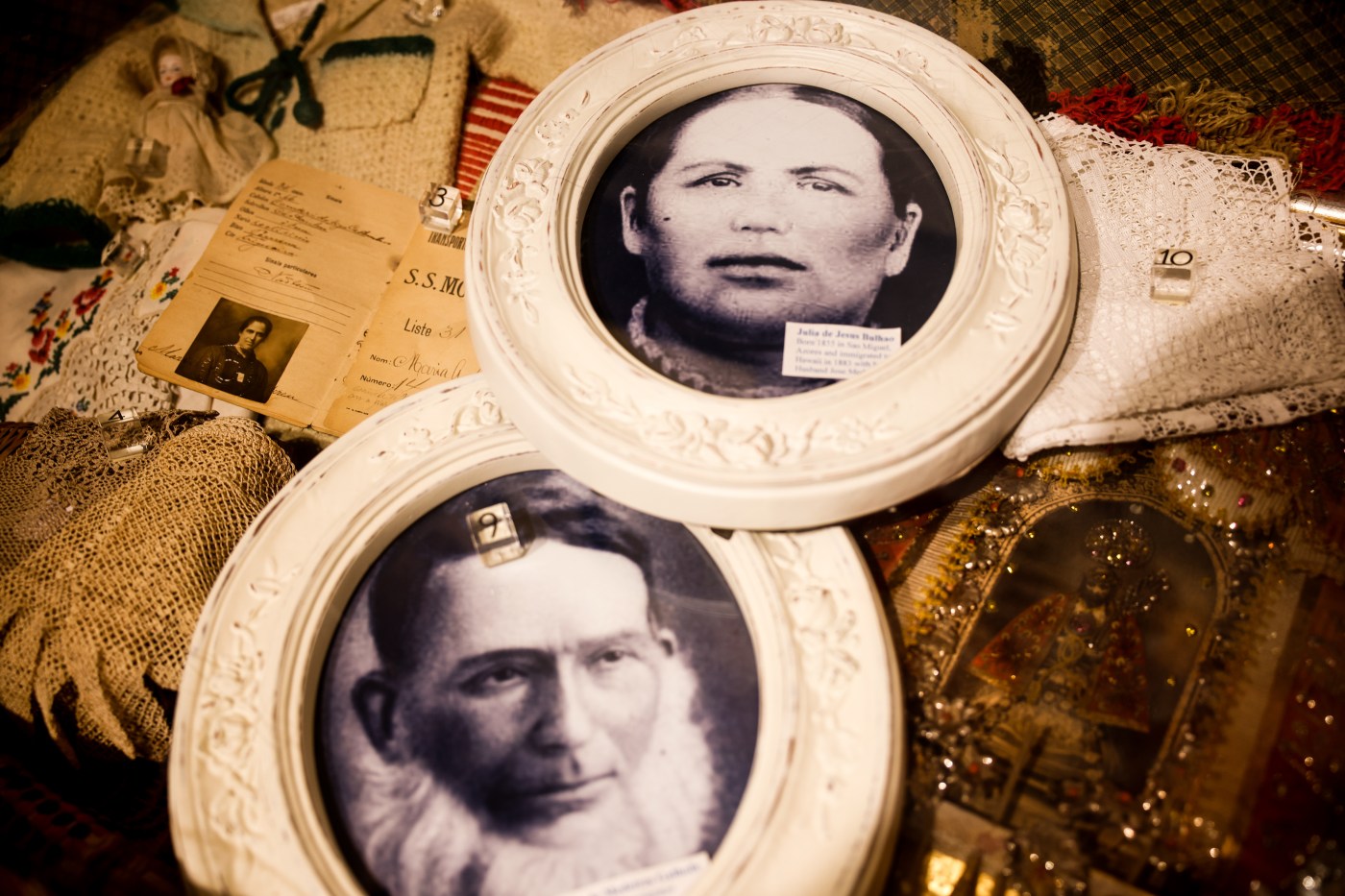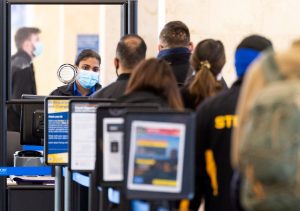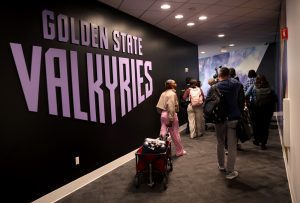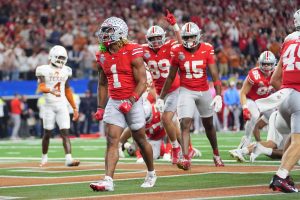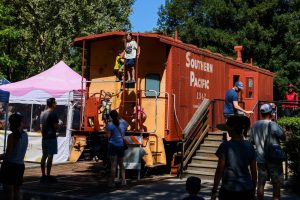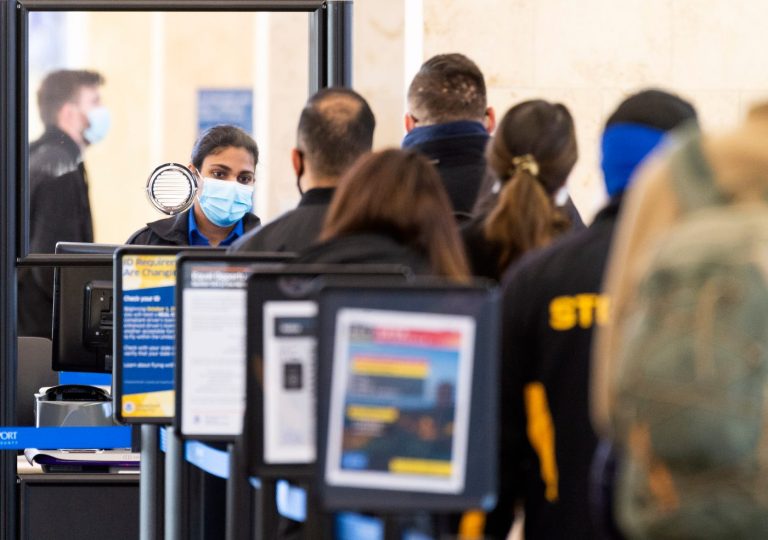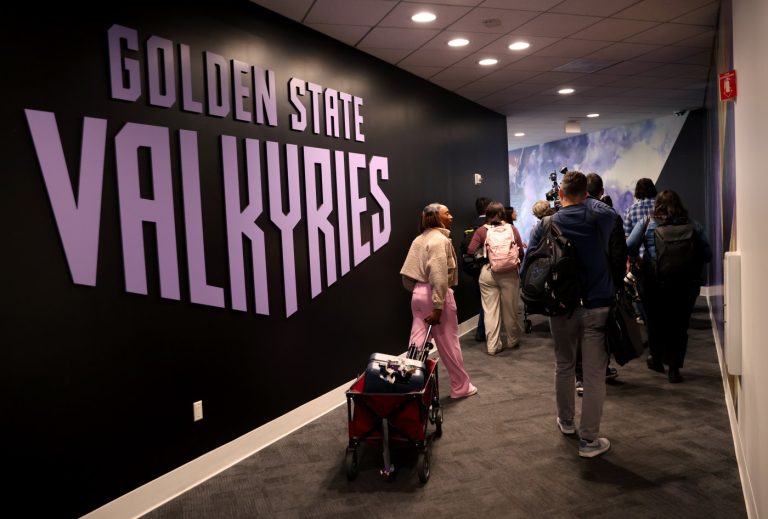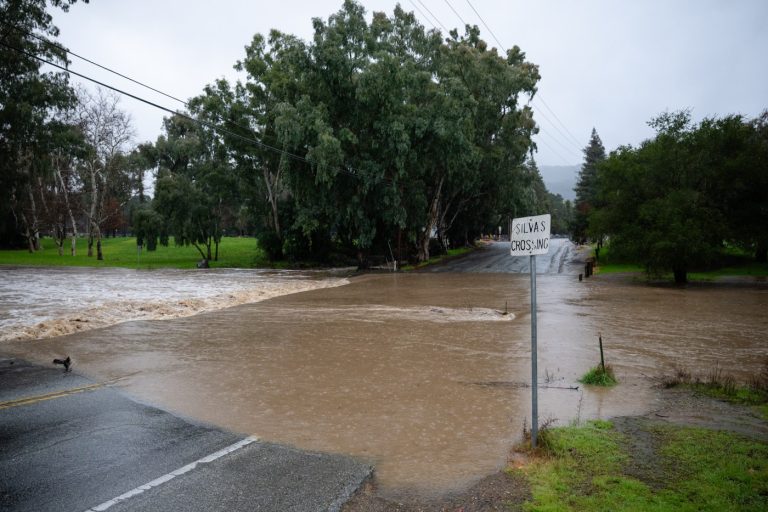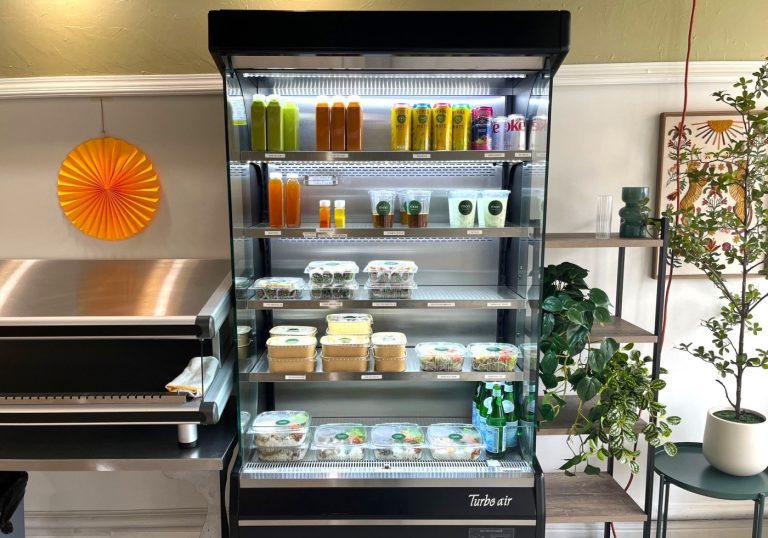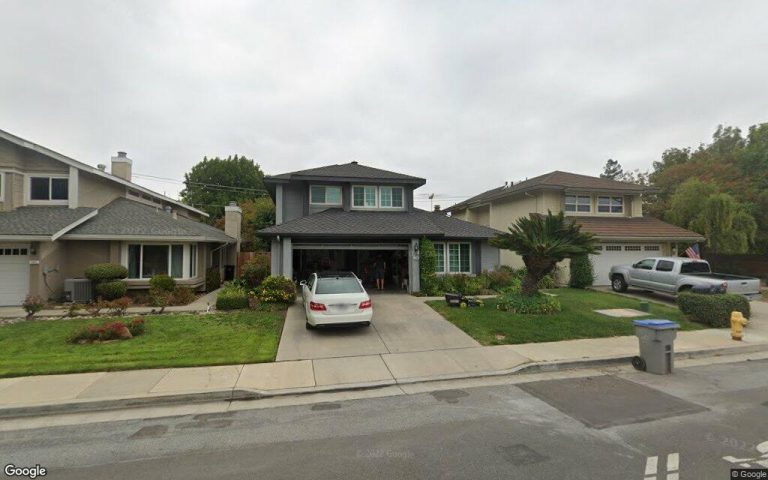Back when the concept of electricity was still new and thrilling, San Jose decided it would erect a humongous “Electric Light Tower” to illuminate downtown. Looking like a misplaced, 237-foot-tall oil derrick and cited later as an inspiration for the Eiffel Tower, the structure was electrified in 1881 to much fanfare — and soon dismay, as people discovered this thing called light pollution.
Related Articles
The Bunny Museum, destroyed by Eaton fire, vows to return
12 Bay Area adventures — big and small — for 2025
Campbell Historical Museum explores ‘Growing Up in Campbell’
Bay Area arts: 12 great shows, concerts and exhibits to catch this weekend
Neon will never die: Inside the Bay Area movement devoted to the glowing art
“Local farmers complained that the tower’s lights disturbed their chickens and prevented them from roosting,” according to History San José, a local nonprofit preservation group. “Another common problem was that intoxicated individuals tried to climb the tower after leaving nearby bars.”
The tower was damaged in a windstorm and eventually collapsed upon itself in 1915. But its legacy lives on as a half-scaled replica inside History Park, a 14-acre public attraction in Kelley Park operated by History San José.
Historical museums dot the Bay Area landscape. They’re tucked in railroad depots, for example, in Danville, Niles and Tiburon, at John Muir’s house in Martinez and in a cable car barn in San Francisco.
History Park is different. The sprawling grounds are home to more than 30 historically important buildings, or their replicas, that have been painstakingly moved here, duplicating life in the Santa Clara Valley from around 1880 to 1930. There are the abodes of California poets and naturalists, a one-room 1872 schoolhouse and cringe-inducing medical office, functioning century-old cable cars and several mini-museums — museums within a larger museum — devoted to local Chinese, Portuguese, Vietnamese, Mexican and African-American history.
It’s a feast for history buffs who crave tangible experiences, as well as for people who simply want a brief respite from our hectic times in the big city.
“History involves all of us, from all different backgrounds, so we try to honor that at the park,” says Ken Middlebrook, a collections curator for History San José. “And it’s special, because we provide this little oasis in San Jose. It’s very peaceful, and you can walk around without any fear of being hit – other than by a trolley, I guess.”
Bicyclists ride past the Electric Light Tower during Christmas in the Park’s Drive Thru Light Show at History Park in San Jose, Calif., on Sunday, Nov. 24, 2024. This is the first year they allowed bikes on the route. (Nhat V. Meyer/Bay Area News Group)
History Park opened in 1971 and was initially informed by so-called “museum towns” on the East Coast, such as Old Sturbridge Village in Massachusetts and Colonial Williamsburg in Virginia. “Their thinking was that one particular moment in history is frozen. That was the original idea for History Park, based around the Electric Light Tower from 1881 to 1915. They were going to create a Victorian village,” says Bill Schroh, Jr., History San Jose president and CEO.
But over the years, the thinking around historical villages and museums has evolved. “If you went to these places 30 years ago, you’d see what I call ‘dead-White-men’s history,’” says Schroh, Jr. “You would not hear about women or minorities. You might see a minority face, but they kind of glossed over slavery, depending if you were in the North or South.
“History San Jose is at a point where we celebrate every culture and heritage that made Silicon Valley what it is today,” he says. “We discuss how America’s never been perfect, but it’s an amazing place, and all of its stories need to be told.”
Among them is the tale of an early Chinatown born from painful circumstances. “People think San Jose is this great multiracial place, but we had blemishes. And back in the 1800s, there was rampant racism toward the Chinese community,” says Middlebrook. “In 1887, White residents were not happy with having these ‘dirty Chinese’ right downtown. Under mysterious circumstances, there was a fire that burned (their neighborhood) down, and the Chinese had no homes. A fellow by the name of John Heinlen offered a sanctuary for Chinese people in what is now considered Japantown, called Heinlenville.”
There, residents built a social hall and temple called Ng Shing Gung. It eventually was demolished, but preservationists built a replica on the grounds of History Park and opened it as the Chinese American Historical Museum. (About half the buildings in the park are reproductions.) The first floor has exhibits devoted to the Chinese-American experience in Santa Clara, and the second story has the temple’s original altar – which was made in Guangzhou, China, but had been languishing in storage at a municipal baseball field – lovingly restored.
“It’s this beautiful, gold-plated altar with hand carvings – just gorgeous,” says Middlebrook.
Ng Shing Gung, Temple of the Five Gods, at the Chinese American Historical Museum at History Park in San Jose, Calif., on Tuesday, Nov. 19, 2024. (Shae Hammond/Bay Area News Group)
Anti-Japanese sentiment in California was notorious around World War II. One local farming family, the Sakauyes, were sent to internment camps but, unlike most, had the rare good luck of coming back to reclaim their property. History Park has some of the family’s early-1900s cabins on display, showing the conditions that migrant workers lived in while building Santa Clara up as an agricultural paradise known idealistically as the “Valley of Heart’s Delight.”
One cabin is laid out according to the memories of a local professor whose Mexican family worked in the California fields. “He described it as six kids and mom sharing one bed, and dad had a bad back, so he had his own bed,” says Katrina Anderson, curator and registrar for History San José.
The cabin next door shows the living quarters of braceros, Mexican migrant workers, with bunk beds and bottles of beer, no doubt a necessity. “It looks like it’s rough and not the greatest conditions to live in. It’s roofed, which is a nice thing,” says Anderson. “The braceros did shifts, so one would go out during the day and another would sleep, then that one would go out at night and the other would take his bed.”
Near these modest buildings is an Italianate-style farmhouse built in 1877 that’s now home to the Viet Museum, telling the stories of “boat people” who fled Vietnam for freedom after the end of the war. There’s also the Portuguese Historical Museum at the Imperio, an impressive replica of a structure built in San Jose around 1915 to honor the holy spirit. Its outdoor plaza has a scale model of a famous mosaic in Lisbon, a monumental compass that pays tribute to Portugal’s navigational and imperial triumphs.
Inside the Portuguese Historical Museum at History Park in San Jose, Calif., on Tuesday, Nov. 19, 2024. (Shae Hammond/Bay Area News Group)
Some of the park’s buildings get their juice from the characters behind them. There’s the former home of Andrew P. Hill, a founding Sempervirens Club member (motto: “Save the Redwoods”) who helped create Big Basin State Park; and the house of Edwin Markham, a poet whose 1898’s “Man With the Hoe” captured the laboring class’s bleak plight. (“Bowed by the weight of centuries he leans/Upon his hoe and gazes on the ground,/The emptiness of ages in his face,/And on his back the burden of the world.”)
A different type of hardship is presented in the office of Dr. Henry Warburton. The Englishman worked as a surgeon aboard a San Francisco-bound whaling ship before opening shop in Santa Clara in the 1870s. The office is accessorized with bone saws, chloroform masks and surgical kits – seen as an improvement over an average doctor’s multitool, the Bowie knife.
“They had a high death rate back then because of all the bacteria,” a park guide says on a recent tour. “The surgeon could perform an amputation in 45 seconds, but the patients generally died from sepsis.”
A dentist later took over the office, and tools of his trade are displayed as well, including porcelain-tooth implants that replaced hippopotamus and walrus bone, and a 19th-century “tooth key” to loosen bad teeth that caused jaw fractures and soft-tissue damage. There’s also a dental chair, with an ominous handcuff attached. “There wasn’t any lidocaine,” says the guide, “and the dentist had to use a foot-pumped drill to perform surgical procedures.”
The Viet Museum or the Museum of the Boat People & the Republic of Vietnam at History Park in San Jose, Calif., on Tuesday, Nov. 19, 2024. (Shae Hammond/Bay Area News Group)
The curators of History Park accessorize its buildings with appropriate artifacts from that time. It’s a challenge, given the immense collections of History San José stored in various off-site locations – roughly 150,000 artifacts including more than 70,000 photographs. The park hopes to install more rotating galleries in the future, but for now curious people can peruse an online archive of fascinating material that extends to the rise of Silicon Valley.
“We have an original Apple 1 computer that was made in the garage and is actually signed by Woz,” says Schroh Jr. “Another fun thing from modern times is a model for Chuck E. Cheese that the gentleman who (co-founded) Atari, Nolan Bushnell, used to get investors. It’s half-Chuck E. Cheese, half-skeleton, and is pretty creepy. You can see the robotics on the inside – only half of it has got skin.”
The archives contain darker material, too, like late-1800s advertising for fruits and vegetables assuring they were packed using “White Labor Exclusively” and gruesome material about the 1933 lynching of two accused kidnappers in St. James Park. A mob broke into the jail with a battering ram and strung them up, at least one naked, with the California governor at the time calling it “a fine lesson for the whole nation.”
A migrant home based off the description by Francisco Jiménez, a Mexican-American writer and professor at Santa Clara University, at History Park in San Jose, Calif., on Tuesday, Nov. 19, 2024. (Shae Hammond/Bay Area News Group)
Preserving such artifacts is important, says Schroh Jr., because if we don’t remember where we come from, we’re not going to get to where we need to in the future.
“There’s that great quote, which is actually a mantra on the wall in my office: ‘Those who don’t study history are doomed to repeat it.’ The second part of that is, those who do study history are doomed to stand by helplessly, while everyone else repeats it because they didn’t study.”
If You Go
Enter San Jose’s free History Park at 635 Phelan Ave. The park is open from 9 a.m. to 4 p.m. daily; buildings and trolley rides are open on weekends only. Find information on the park’s docent-led walking tours, public lectures, workshops and cultural festivals at historysanjose.org
